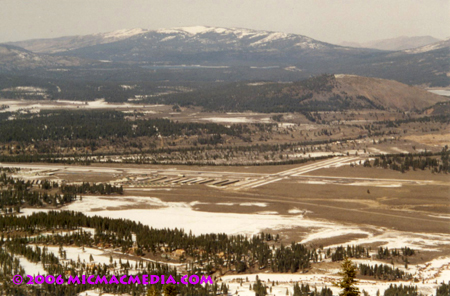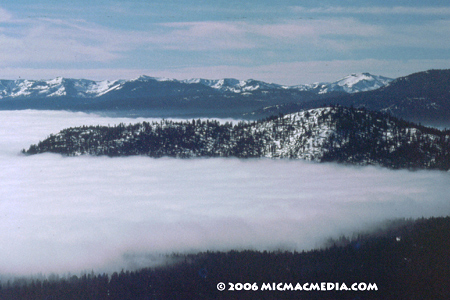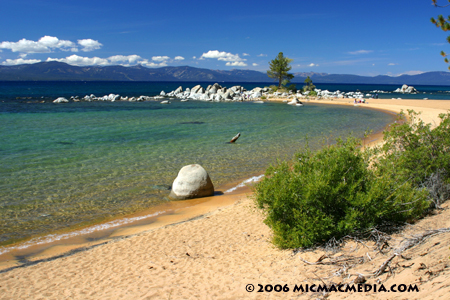|
Tahoe Nugget #88:
Truckee: Nation's Cold Spot?
July 6, 2006
Weather has been balmy despite the afternoon breeze off Lake Tahoe, with temperatures reaching the lower 80s. We love the strong summer sun; yet overnight lows in Truckee have been flirting with the lower 30s. What
gives?
The weather forecast calls for clear skies and a temperature of 21 degrees. A typical winter morning across much of the United States, right? Not quite. It was the forecast for August 13, 1993, in
Truckee, one of the coldest (and snowiest) towns in the contiguous 48 states.
That year, Truckee recorded the nation's lowest temperature 62 times, more than any other city or town in the lower 48. The
average minimum temperature at the Truckee-Tahoe Airport for July and August in 1993 was 31 degrees, nearly seven degrees below normal. Climatologists blamed the chilly temperatures on the June 1991 eruption of the
Philippine volcano, Mount Pinatubo.
Truckee may register the lowest temperature in the nation, but not during the winter ski season as one might expect. These relatively low temperatures usually occur from
May to October, when residents are more interested in warm weather sports like golfing, boating and fishing.
Truckee's temperatures average about 20 degrees cooler than sea level locations — primarily
due to elevation.
On clear nights, cool air from the high mountains surrounding the Truckee airport sinks downslope creating a chilled microclimate in the region's high-elevation basin. Without breezes to
stir up the night air, dense cooler air settles to the ground with warmer air displaced aloft. This nocturnal inversion keeps Truckee's average minimal morning temperatures hovering in the upper 30s during the
summer.
In addition, Truckee's typically cloud-free evening sky allows accumulated daytime heat to escape rapidly back into the atmosphere, a dynamic known as radiational cooling.
With low levels of
humidity in the air, there is nothing to trap and hold daytime heat. As soon as the sun sets, temperatures plummet. The same principle applies to deserts, known for scorching heat during the day followed by frigid
nights.
Nearby Nevada holds the nation's record for extreme diurnal (daily) temperature swing. The Silver State's record occurred at Deeth on September 21, 1954, when the temp soared from 12 to 87 degrees,
an increase of 75 degrees.
Because Truckee is often the nation's coldest spot on summer mornings, the town's reputation is considered a tongue-in-cheek joke among locals who enjoy the Sierra's relatively
balmy winters.
Just for the record, out of the last 25 years, Truckee has made the top five rankings 11 times. And three of those years, 1991, 1993 and 1994, Truckee claimed the dubious honor of coldest spot
in the nation, excluding Alaska.
The abandoned ghost town of Bodie, located at 8,300 in a high-elevation basin, consistently ranks as the number one location in the U.S. with the most recorded national lows.
In 2001, rangers at Bodie reported the coldest temperature in the country on 167 days, which blew away all competition nationwide.
Photo #1: View of Truckee Airport and Martis Valley basin from Northstar
ski area.
Photo #2: Winter inversions often have enough water vapor to form clouds. This shot is under moonlight.
Photo #3: Zephyr Cove last year. Beautiful. Beaches are smaller this year due to high
water.



|





